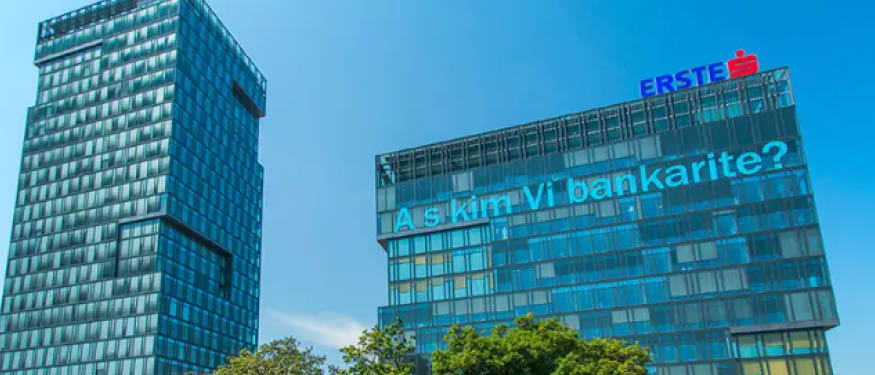Recently local authorities have been hit by rising electricity costs. No-one’s surprised nowadays when electricity purchase prices rise by several hundred percent or when tenders are repeatedly cancelled. As a result, local authorities often decide to take radical steps - temporary closures of public facilities, limited street lighting or turning off the illumination of buildings have become standard in some towns and cities. There’s no doubt that a major part of the electricity purchased by local government goes on street lighting systems, which are often inefficient in terms of energy consumption. In many cases, it might be a good idea to have a look at using public-private partnerships as a way to upgrade street lighting systems and cut electricity requirements. It is also worth taking note that developing this model for implementing public tasks in the street lighting sector is explicitly included in the strategic document Polish Energy Policy until 2040 issued by the Ministry of Climate and Environment and setting the framework for the energy transition in Poland.
What might such a project look like?
The main objective of a project to upgrade street lighting is to carry out, at the construction stage, design documentation and replacement of existing street lighting fixtures with modern energy-efficient LED lamps, and at the operation stage to maintain the lighting infrastructure in proper technical condition, implement and manage the street lighting control system in order to achieve the goals of reducing electricity consumption and operating costs and providing monitoring of electricity consumption by the installation. At the same time, the private partner is obliged to finance the project, and for all of its obligations it is remunerated in the form of an availability payment, which is the sum of the remuneration for performing the above-mentioned tasks. This fee can be covered in part by the surplus resulting directly from the savings in electricity consumption generated by the project, which in this type of proceedings are usually assessed on the basis of the bid evaluation criteria.
With respect to the procedural considerations of implementing such projects, bearing in mind that the value of the project does not usually exceed the EU thresholds (in 2023, PLN 23,969,275 for construction works), it is impossible to apply the often preferred manner of selecting a private partner, i.e., competitive dialogue. The possibility to apply this procurement mode involving negotiations was restricted by the Public Procurement Law of 11 September 2019 (consolidated text: Journal of Laws of 2022, item 1710, as amended, “PPL”) to projects with values exceeding the EU thresholds, while for projects of lower value, contracting authorities may only use the basic procedures. The specifics of public-private partnership projects seem best-suited by a variant of the basic procedure, in which all interested contractors submit initial bids in response to a procurement notice, then the contracting authority conducts negotiations to improve the content of the bids, and after the conclusion of the negotiations, the contracting authority invites contractors to submit final bids (Article 275(3) PPL). Obviously, the above does not exclude the possibility of applying to a given project the variant in which the contracting authority selects the most favorable offer without negotiations (Article 275(1) PPL) or its equivalent for larger projects, i.e., an open tender. It seems that future market practice in the street lighting sector may go precisely in this direction - in particular, taking into account good practices already established in the market (in terms of both the approach to the way of describing the object of the contract and the principles of contracting).
Moreover, in accordance with Article 3a of the Public-Private Partnerships Law of 19 December 2008 (consolidated text: Journal of Laws of 2023, item 30), prior to the initiation of proceedings to select a private partner, the public entity shall prepare an assessment of the effectiveness of the implementation of a public-private partnership project compared to the effectiveness of other ways of implementing the same project, in particular, with the use of public funds only. During this process, it is also worthwhile developing documents that are key to the validity of the conclusions arising from the process, and which at the same time may prove important for the quality of the implemented procedure for selecting a private partner ‒ in the case of the street lighting sector, these may include, in particular, an inventory of the lighting system or an energy audit. There is no doubt that thorough preparation of the procedure for selecting a private partner can positively affect the dynamics of the entire further process and translate into greater chances of success in the form of a final contract.
Market practices
Although only eight public-private partnership contracts have been signed to date in the street lighting sector, the increasing activity of local authorities in this area is noticeable, as evidenced, among others, by the projects listed below.
Upgrade and expansion of the lighting system in the municipality of Wiązowna under the PPP formula
This is the latest of the public-private partnership contracts signed in the street lighting sector. As part of the project, nearly 2,000 existing worn-out fixtures were replaced with modern LED fixtures, a lighting infrastructure control system with remote monitoring was implemented (along with the respective adaptation of about 700 existing LED fixtures). The project was implemented through an open tender (following cancellation of a competitive dialogue procedure) and the contract was signed with ECM Energia S.A. on 22 September 2022 (for PLN 32,841,426.60 gross).
Upgrade of street lighting in the municipality of Łomianki under the PPP formula
The proceeding was initiated in March 2022, while preparatory works are now being carried out with a view to sending an invitation to private partners to submit their final bids. The project involves upgrading the lighting infrastructure by replacing about 3,500 existing street lighting fixtures with modern LED fixtures (the current street lighting is based on conventional light sources - sodium and mercury lamps of 70W to 250W) with the simultaneous construction of about 200 new street lighting points and poles, the implementation of a lighting control system for the new LED fixtures, and the adaptation of nearly 300 existing LED fixtures to this system. The project required arrangements with PGE Dystrybucja S.A., whose approval for the street lighting upgrade was required due to the ownership status of the lighting infrastructure in the municipality. The project is implemented under the basic procedure with mandatory negotiations (Article 275(3) PPL).
Upgrade of the street lighting system in Kraków
This project is under preparation - currently the Ministry of Development Funds and Regional Policy is conducting the procedure to select advisors (technical, business, financial and legal ones) to support the public entity with implementation. The project involves upgrading the street lighting along public roads in the city of Kraków to achieve an energy efficient system (and its subsequent operation). The project certainly stands out for its scale - it involves the replacement of some 20,000 existing luminaires with new energy-efficient LED luminaires, some 6,800 lighting poles and about 238 km of cable network. In addition, it is planned that 10% of the new luminaires will be equipped with an auxiliary power outlet to allow smart city devices to be charged 24/7. The estimated capital expenditures related to the project are around PLN 200,000,000 gross.
Summary
There is no doubt that public-private partnerships ‒ especially in view of the challenges currently faced by local authorities ‒ are an interesting alternative to the usual way of implementing public tasks. This type of long-term cooperation in the street lighting sector can bring tangible results, as in addition to achieving the anticipated energy, economic and environmental effects of the modernized infrastructure, such parameterized projects certainly have a positive impact on improving the safety of pedestrians and road-users, raising the level and quality of life of the local community, and improving the aesthetics of the lighting infrastructure. Furthermore, market practice proves that this model for delivery of lighting projects can be used by almost all local authorities, regardless of their size or the scale of the project.
By Jakub Kot, Senior Associate, Dentons
















